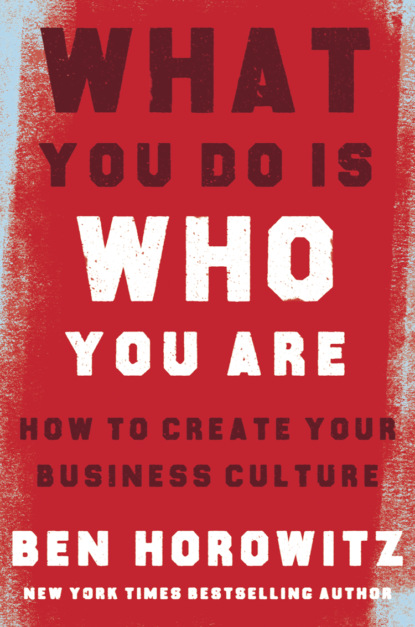По всем вопросам обращайтесь на: info@litportal.ru
(©) 2003-2024.
✖
What You Do Is Who You Are: How to Create Your Business Culture
Автор
Год написания книги
2019
Настройки чтения
Размер шрифта
Высота строк
Поля
“Okay, why don’t you talk to your team,” I replied. He was an established leader at GM, responsible for a pretty important part of the company, with a multimillion-dollar budget. He called me back a few minutes later, saying, “I talked to the team, we brainstormed, and we agreed that the four people who occasionally need to meet with government officials will keep a pair of dress pants in their locker.” Problem solved.
The change sent a lasting visual message to GM’s entire management team. Every time a manager saw an employee, it would trigger the thought, Is he dressed appropriately? And, if not, What’s the best way for me to manage that? Do I have a good enough relationship with him to communicate effectively on this sensitive issue? The new code empowered—and required—managers to manage.
When Michael Ovitz ran Creative Artists Agency, Hollywood’s leading talent agency, he, too, had no explicit dress code. But he absolutely had an implicit one. “In the mid-seventies, we lived in a world coming off sixties culture, where everyone wore jeans and T-shirts,” Ovitz recalled. “That’s what I needed to counter-program.” The dress code he landed on came from the culture of authority he sought: “If you walk into the room wearing an elegant dark suit, you pick up unbelievable positioning power. If you want respect, carry yourself in a way that commands it.”
Ovitz wore elegant dark suits every day, leading by example. He never explicitly asked anyone to follow his lead. That didn’t mean there weren’t consequences if you didn’t. “There was a downpour in LA, and some people came in in rain boots and jeans. I went up to one agent and said, ‘Nice outfit. Are you working on set today?’ And that rattled through our business.” Ovitz was giving him the hip-hop ultimatum: Are you a hustler or a customer? Are you a world-class agent or a wannabe actor? This steely but largely unspoken approach soon shifted CAA to nearly complete dress code compliance. “The only exception was our music department, because musicians don’t like guys in suits.”
The results of the code on the culture were profound:
It became part of our ethos: we were classy, elegant, conservative businesspeople. It spoke to everything we wanted to be without our having to say it out loud. Through our culture we built our business to a place where people respected it due to the culture itself.
How you dress, the most visible thing you do, can be the most important invisible force driving your organization’s behavior. Ovitz sums it up: “Cultures are shaped more by the invisible than the visible. They are willed.”
INCORPORATE OUTSIDE LEADERSHIP—HEY, MOTHERFUCKER!
When I was CEO of LoudCloud, I had to shift the company from a high-flying cloud services company into a grind-’em-out enterprise software company so we could survive. After the dot-com and telecom crashes of the early 2000s, the market for cloud services had gone from nearly infinite to nearly zero overnight. After we squeaked through the transition as a new company called Opsware, we found ourselves getting killed in the software market by a competitor named BladeLogic. I knew that to compete with them we needed a major cultural change.
At LoudCloud, we began with unlimited demand and built a culture oriented around fulfilling it. So we were focused on empowerment, removing bottlenecks to growth, and being a great place to work. To succeed as an enterprise software company, selling our platform to big businesses, we would have to become a culture distinguished by urgency, competitiveness, and precision. I needed to bring in a leader with those attributes.
The person I hired as our head of sales, Mark Cranney, was not a cultural fit with the rest of us. In fact, he was a complete cultural misfit. Our employees were mostly irreligious Democrats from the west coast who dressed casually and who were cordial and easygoing. We assumed that everyone had the best intentions. Cranney was a Mormon Republican from Boston who wore a suit and tie, was deeply suspicious of everyone, and was one of the most competitive people on earth. But over the next four years he not only saved the company, but got us to an outcome nobody would have believed.
I knew why I hired Mark: when I interviewed him, I could tell he had the urgency, the know-how, and the discipline we needed. But I did not understand why he took the job. He knew we were losing and, given our granola-eating demographics, that we were probably losers. So what made him take the risk? I recently asked him, and his reason surprised me:
I had risen as far as I could at an east-coast-based company called PTC; they had nepotistic politics at the top level. I must have looked at forty sales jobs in Boston and there was nothing good.
The Opsware recruiter called several times and I finally called him back and said, “I’m not going to California. In California the real estate sucks, the culture sucks, and they don’t appreciate the sales side. Plus, isn’t that the company the BladeLogic guys call Oopsware? What do you think, I’m fuckin’ stupid?”
He keeps calling and finally, I say “Fine, I’ll go meet Marc and Ben, but that’s it.” [Marc Andreessen was the company’s cofounder.] Then I look at my BlackBerry when I land in San Francisco and I see there’s a whole fucking crew I have to interview with.
Вы ознакомились с фрагментом книги.
Приобретайте полный текст книги у нашего партнера:
Приобретайте полный текст книги у нашего партнера:









